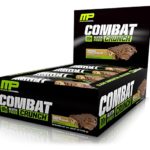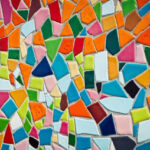One of the first questions new soap makers have is if they need a stick blender to make soap.
Every soap making tutorial that you see online it seems features the phone of a stick blender just besides the freshly made soap.
Why? Do you need a stick blender to make soap? No, but you should use one. I’ll go into detail below.
Can You Make Soap Without A Blender?
You absolutely do not need a blender to make soap. Soap has been made for thousands of years by people who didn’t have blenders. You just need the lye water and fat mixture, and then stir it with a stick.
But do you want to do that? No, I don’t think so. There’s a reason that every soap blog and soap making tutorial tells you to make soap with a blender.
It speeds up the soap making!
If you’re going to be making soap, then there’s not reason to not use a blender. If you don’t, the only thing you’re doing is prolonging the entire process. And there is no reason to do that.
So, you can make soap without a blender, but it will take longer. And you will need something to “stir” the lye water and fat, so you will need a plastic spoor or wooden spatula. It’s not like you won’t need any tool.
Do You Need A Stick Blender to Make Soap?
So, I do recommend that you use a stick blender. Some people like regular sized blenders, otherwise called jar blenders, but these are not the best option.
The reason that so many people like stick blenders is that it makes the soap making process safer.
When you use a stick blender to make soap you have more flexibility when making soap. When you use a jar blender, it becomes more of a safety problem.
However, you don’t need a stick blender, but it helps.
What Kinds of Blenders Can You Use to Make Soap?
Any blender can technically be used to make soap. There are videos online where people use large Ninja jar blenders, and I’ve even seen people use mini blenders.
But by a wide margin the most popular type of blender to use when making soap is a stick blender. That’s because a stick blender is simply safer and easier to use.
Jar Blenders can be used, but you have so be careful when pouring the lye mixture and fat into the blender. Lye burns, so you want to limit the amount of movement. It’s safer to simply have a large bucket (plastic) to use to make soap.
If you use a Ninja or Vitamix, the other issue is that you’re going to have to scrap out all of the soap. The upside is that if you don’t blend the soap a lot it will pour out into the molds pretty easy. The downside is that you will have to scrape the soap out of the blender.
Think of the soap (once it’s at the point where it can be put into a soap mold) as being similar to a pudding. If you make a pudding in a blender, think of how hard it will be to get it out of the blender.
My final thoughts are to steer clear of jar blenders. The heat created when making soap makes most jar blenders not fit for soap making. Unless you happen to have a jar blender that can blend hot liquids (which most really can’t handle) then stick with a stick blender 🙂
Why Use A Blender When Making Soap?
So, here we come to the main reason for using a blender when making soap. And when I discuss the benefits here, I am not speaking about the benefits of a stick blender vs a jar blender. This section only talks about the benefits of blenders in general.
Speed. That’s the benefit. Speed.
If you don’t use a blender when making soap, you’re going to have to hand stir. And that takes a long, long time.
The process of making soap requires the following:
- Mix Lye Crystals and Water (you do not use a blender for this)
- Measure out and heat Oil
- Take Lye Water and add to Oil
- Mix (this is where you will want a stick blender)
That last section is the area where you will want to have a blender. You will likely put the the oil and lye mix into a plastic bucket or container or some sort. Then you can either stir by hand, or transfer to a blender jar, or use a stick blender to blend the soap using the immersion method.
You might see some tutorials online for soap making that cover “traditional soap making” which don’t use a blender. And, sure you can do that. Just know that it’s going to take a lot of time for the soap to “trace”.
Trace is the point at which the mixture of lye water and oil has become soap and is ready to be poured into molds. It’s way faster to do this with a blender.
And you do want to stir the mixture because if you just pour the lye water mixture into the oil, then there might be small lye crystals that don’t get blended properly with the soap. This can be an issue which causes the soap to not completely cure right.
Safe Blenders For Making Soap
The safest blender is a blender that won’t splash you with lye water and soap while you are making your soap.
Jar blenders are ok because you can put everything into the jar, but they have serious drawbacks. First, as mentioned above, they are hard to get soap out of. Second, they are limited in size. You can’t make a lot of soap in even a large blender.
Stick blenders are better because they can be used as immersion blenders. This means that you can get a large bucket (something like what you can pick up at Home Depot for like 6 bucks) and then make soap safely in that without fear of getting splashed (you should still wear protective clothing).
A safe blender is one that allows you to make soap without hurting yourself. How can you hurt yourself? Well, by splashing lye around (that’s the main hazard with soap making).
If you are using a jar blender, then your major safety issue is that the seal isn’t tight and the soap and lye mixture will spurt out.
The major hazard when using a jar blender when making soap is that you are going to be blending something that is very hot.
What Materials Can Your Soap Blender Be?
It’s pretty wide. Most blender materials are fine for soap making. Why? Because most blenders are made with glass, stainless steel, or plastic.
These are all materials that you can use with soap making.
Safe Blender For Making Soap
When you are making cold process soap (or hot process) you will need a blender. If you’re making “melt and pour soap” then you don’t need a blender….you also don’t need lye.
As an aside, if someone you know wants to make soap, but they are either a young child, or someone who is crafty but not into heavy duty DIY—then melt and pour might be much safer. Lye (which is used in hot and cold process soap making) burns.
Melt and pour isn’t really “making soap” as much as melting down premade soap and pouring it into molds. It’s fun, but it’s not true soap making.
But if you are making a real cold or hot process soap, you will need a blender.
Now, metal is the way to go. You want stainless steel and glass and plastic. These are all materials that are fine reacting with lye.
Remember….soap is just Lye and Water and Fat and Time. That’s it.
If you’d like to get a gift for young kids….make sure it’s a melt and pour soap kit. These are safe:
If you’re looking to make homemade soap, especially cold process or hot process soap, then you might do good to read my reviews. I covered them in an article called best stick blender for making soap.
Related Posts

Hi Everyone!
Jenny O’Brien here. Nutritionist & personal trainer. Just your average vegetarian and smoothie fanatic!
If you have any questions, or you’d like me to cover a particular topic, drop me a line and let me know!
Thanks!






